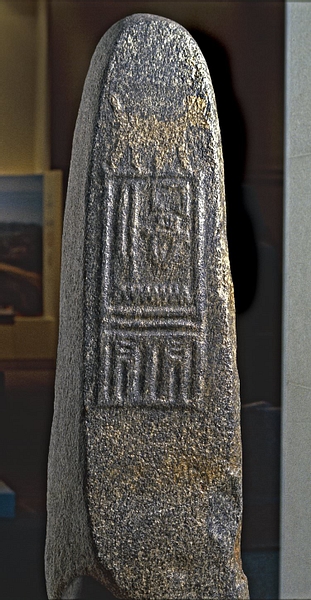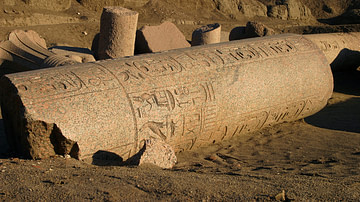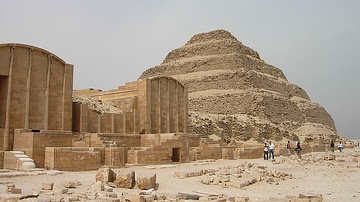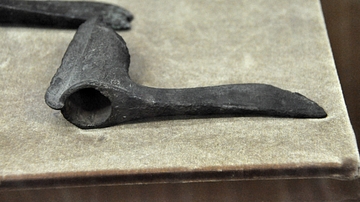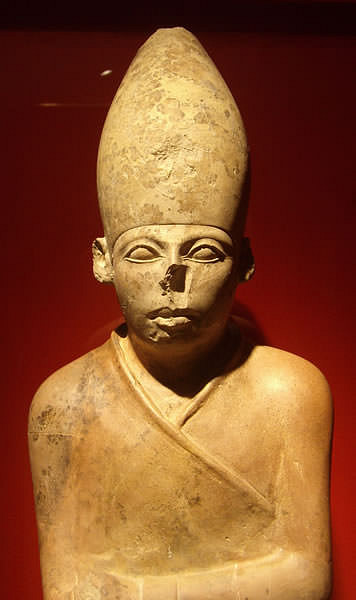
The Second Dynasty of Egypt (c. 2890 - c. 2670 BCE) rose from the turmoil which ended the first and was marked by uprisings (or, at least, internal difficulties) throughout. The precise cause of this civil unrest is unclear as sources for this period are confused and even the dates of the rulers are unreliable. Some of the names of the kings given by Manetho are not supported by any archaeological evidence and may be duplications of earlier rulers under other names. During the Second Dynasty, developments in culture and military expansion continued, especially in Nubia, but war between Upper and Lower Egypt seems to have occupied many of the rulers and the nation may even have divided during this time.
Uncertain times
Due to whatever national upheaval was going on, the history of the Second Dynasty is difficult to read. Scholars, historians, and archaeologists writing on the period repeatedly use terms such as "it is believed", "possibly", "perhaps", "probably", and "it is thought" in making most of the claims regarding the reigns of the pharaohs and what they accomplished. There is definite physical evidence of the reign of some kings by way of tombs, artifacts, and building projects but others exist in name only on lists such as Manetho's chronology, at Abydos, and in the Turin King List. Perhaps the most accurate reading of the Second Dynasty is that it served as a bridge between the founding of a central government in the First Dynasty and the consolidation of Egyptian culture in the Third.
Rulers of the Second Dynasty
The following list of Second Dynasty rulers is based on the archaeological record with reference to the Turin King List and Manetho's chronology. No dates are given for these rulers because none can be verified.
Hotepsekhmenwy (Greek Name: Boethos) resolved the conflict which ended the First Dynasty of Egypt and ruled for approximately thirty years. His name has been interpreted to mean "two powerful ones are at peace" in reference to whatever action he took to end the clash between the last two princes of the First Dynasty. This interpretation has been contested, however, because his name appears on the entranceway of the tomb of the king Qa'a (last king of the First Dynasty), who ruled before the alleged civil war of the princes. Although the details of his time are unclear, it seems Hotepsekhmenwy ruled over a difficult period of unrest in the country. Although he managed to control his kingdom, there seems little, if any, expansion and his efforts were concentrated on internal difficulties. Precisely what these difficulties may have been is not known but it seems they had to do with a conflict between Upper Egypt's control of Lower Egypt and the latter region's resistance.
Raneb (also known as Nebra, Greek Name: Kaiechos) was possibly the brother of Hotepsekhmenwy. He ruled for approximately fifteen years and may have seized power in a coup (though this is uncertain). He is the first Egyptian ruler to add the name of the sun god Ra to his name and thereby directly link himself and the title of the king to the gods (a practice which would continue throughout Egypt's history and would come to define the office of the ruler of Egypt). Images of the goddess Bastet (depicted as a cat or a woman with a cat's head) first appear under his reign and other religious iconography became more widespread, arguing for a more peaceful and productive rule than his predecessor; though this is by no means certain, and there is evidence the country continued to experience civil unrest and rebellion.
Nynetjer (Greek Name: Binothris), like his predecessors, ruled over a difficult period in Egypt's history as evidenced by his division of the country into two separate realms. Whether this was caused by a famine (as some scholars suggest), which he felt could be more easily dealt with by splitting the country in half, or continued rebellion, is debated and there is no conclusive answer. It is thought that he granted women the right to rule but this is claim is contested as the evidence is too vague to interpret clearly.
Weneg-Nebty, the next ruler, is disputed and thought by most scholars to be Raneb or the later king Peribsen.
Senedj (Greek Name: Sethenes) may also be Peribsen, though this claim is disputed. Nothing is known of his reign.
Peribsen (also known as Seth-Peribsen) is considered an important ruler for the cultural changes which took place under his reign as well as for his name which replaced the god Horus with his rival Set. Horus the Younger was the son of the god Osiris who defeated Osiris' brother (and murderer) Set to restore balance to Egypt. It has been suggested that Peribsen's adoption of Set's name indicates a significant change in the religious orientation of Egypt at this time. Since Peribsen's name does not appear on any records of Lower Egypt, however, it has also been claimed that he ruled over a divided country and opted to distance himself from the Cult of Horus for political reasons. It has further been suggested that Peribsen was the first monotheist (predating Akhenaten by centuries) but this claim has been largely discredited as there is evidence of many different gods under his reign.
Peribsen re-organized the bureaucracy of Egypt and encouraged literacy and religious practice. The first complete sentence in Egyptian history dates from his reign and was found in his tomb. The sentence reads, "The golden one, he of Ombos, hath unified and handed over the two realms to his son, the king of Lower and Upper Egypt, Peribsen." According to scholar Marc Van de Mieroop, "Earlier inscriptions, often found on seals that were impressed on clay, were terse and provided little beyond people's names and titles." (30) The sentence found in Peribsen's tomb, on the other hand, clearly states how the god Set ("he of Ombos") legitimized the rule of Peribsen. As the sentence clearly states that Peribsen ruled over Upper and Lower Egypt, the claim that he adopted Set as his patron god to distance himself from the ruler of Lower Egypt has been repeatedly challenged.
Khasekhemwy (Greek Name: Cheneres) was the last king of the Second Dynasty. He may have been the son of Peribsen or a rival who defeated him in battle. Little is known of his reign but he may have again brought the two regions of Egypt under central rule after Peribsen's defeat (according to one theory) or after he ascended the throne as a legitimate successor. If one accepts the claim that Peribsen ruled over a united Egypt, then Khasekhemwy strengthened that bond. He is known for initiating numerous building projects throughout Egypt which may still be seen in the modern day at Hierakonopolis and Abydos. He was the father of the pharaoh Djoser, founder of the Third Dynasty of Egypt.

